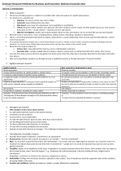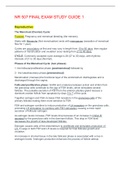Samenvatting
Summary Research Methods for Business and economics- Ba2 VUB
- Vak
- Research Methods
- Instelling
- Vrije Universiteit Brussel (VUB)
This is a summary for the course Research Methods for Business and economics given by professor Scheerlinck. Since there is no mandatory notebook, this summary is very useful since it contains all the concepts discussed in the lecture in more detail.
[Meer zien]












